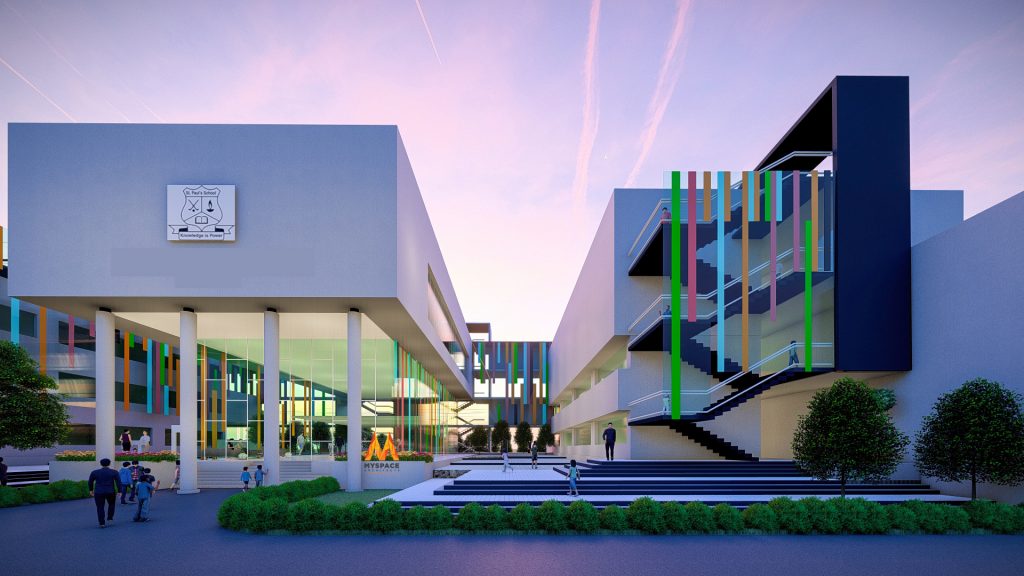 As per the Census data, India has the largest proportion of population in the younger age groups in the world. 35.3% of the population of the country is in the age group 0-14 years at the Census 2001while 41% of the population account for less than 18 years of age. Educating all of them, needs huge infrastructure and facilities for the brighter future of the country. Hence every city, every village is to make sure that there are enough number of schools that provide quality education to their children.
As per the Census data, India has the largest proportion of population in the younger age groups in the world. 35.3% of the population of the country is in the age group 0-14 years at the Census 2001while 41% of the population account for less than 18 years of age. Educating all of them, needs huge infrastructure and facilities for the brighter future of the country. Hence every city, every village is to make sure that there are enough number of schools that provide quality education to their children.
Establishing schools, equally in urban and rural areas has always been a challenging and priority task for all the governments. But still we can’t say with 100 percent surety that all the children of India are getting access to a good education. With the new education policy, the sector is to witness a drastic change in terms of quality education and physical infrastructure to support the creative and multi-disciplinary learning from early ages.
Planning for a school starts with 3 planning approaches:
- Strategic Planning
A strategic planning forms the basis of your school as to why your school exist(purpose) and where do it want to reach in the future(aim) and how do you plan to get there (how). This is basically a frame work as to how the teachers and students are expected to behave and work towards a common defined goal. This also helps to build up the uniqueness or USP of your school. A strategic planning can also include the understanding of your target group of people, their education, paying capacities, exposure, background etc. All these factors help you to draw a financial planning both long term and short term for the operations of the school. Milestones of progress can be defined right from the inception; this would help you to implement periodical improvement strategies. All these plans must focus towards improving the student experience at the school and producing better students every year, as they are going to be the ambassadors of your school, in through years to come. Student progression in terms of pre-primary to primary and secondary to higher secondary needs to be well taken care of. With the current changing scenario of education and new education policy every school should work towards giving them the right exposure to higher education opportunities and training them for employment. The planning should focus on building up children who can quickly adapt to the fast changing job scenarios and global ecosystem.
- Curriculum Planning
 Once you have your strategy ready, focus on developing your curriculum to suit the student requirements and vision for the school. Curriculum must be planned specifically for each age group of children as per the Indian standards. The key to curriculum building is about recruiting the best and the brightest teachers of the country, a good teacher with a vision can ignite hundreds of minds. Updating your syllabus or curriculum every 2 or 3 years with new knowledge, based on emerging technologies and latest innovations need to be stitched into the curriculum for continuous improvements. There are different syllabuses or curriculum a school can follow in India like a state, CBSE, ICSE etc. The choice of the curriculum must be planned right from the beginning as each of the curriculum demands specific infrastructure requirements. In India if you are planning for a CBSE school the best way to start would be to run the school with a state syllabus for 2 years to obtain an NOC and apply for a CBSE affiliation.
Once you have your strategy ready, focus on developing your curriculum to suit the student requirements and vision for the school. Curriculum must be planned specifically for each age group of children as per the Indian standards. The key to curriculum building is about recruiting the best and the brightest teachers of the country, a good teacher with a vision can ignite hundreds of minds. Updating your syllabus or curriculum every 2 or 3 years with new knowledge, based on emerging technologies and latest innovations need to be stitched into the curriculum for continuous improvements. There are different syllabuses or curriculum a school can follow in India like a state, CBSE, ICSE etc. The choice of the curriculum must be planned right from the beginning as each of the curriculum demands specific infrastructure requirements. In India if you are planning for a CBSE school the best way to start would be to run the school with a state syllabus for 2 years to obtain an NOC and apply for a CBSE affiliation.
- Infrastructural Planning- to give a unique user experience
Land & Building: And last but not the least, the infrastructural planning, which starts right from buying land (which is registered under the name of a society or trust) to construction of required buildings. A school infrastructure needs to have a fully developed land with a playground and necessary buildings with all the required services to obtain necessary affiliations. The planning for the campus and building is crucial in making a brand name and a smooth progression into the next level of education competing with the ever growing competitors. A smart planning can result a cost effective infrastructure with a unique ambience.
Rules & Byelaws for Building: The Indian standards give an outline of the area requirements for the schools. These are not mandatory rules but are the guidelines. While there are few rules on the minimum requirements that are set by the affiliation bodies and National Building code, for example size of class rooms and number of toilets.
As per the Indian Standards a Nursery school classroom to be designed for 20- 25 students and for all the higher age groups a maximum of 40 students (to a maximum of 45 students in ICSE). And the minimum floor area requirement per student in a class is 2sq m in preschool, 1.11 sq m for primary and 1.26 sq m for Higher Secondary, while CBSE prescribes a minimum of 1 sqm of area per student in a school. As per Indian standards a 0.2 sq m area per student need to be reserved for Washroom facilities. The National Building Codes gives guidelines as to how many number of washrooms are required as per number of girls, boys and staff which are mandatory to be followed for obtaining building approval. Meanwhile there are fire regulation standards, also prescribed by National Building Code which are mandatory parameters to be followed.
While following all of this, it depends crucially on your architect how well he is able to arrange your building blocks to get maximum efficiency or space utilisation yet giving a unique user experience to support the overall growth of the school.

